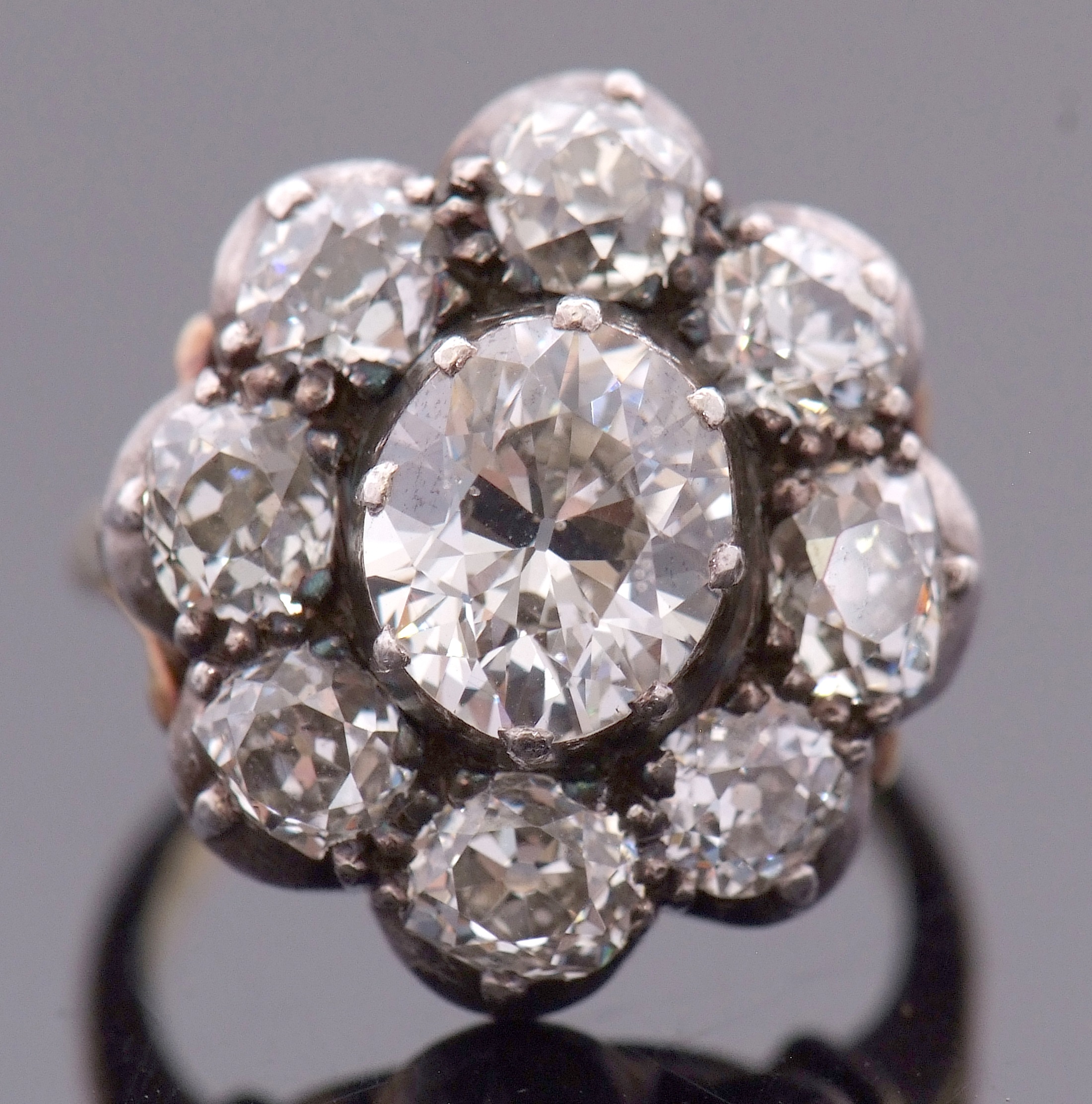

27/05/2023 General News
Angela Marshall, a Fellow of the Gemmological Association and a qualified diamond grader, explains the history and appeal of the most valuable of gemstones.
‘A diamond is just a chunk of coal that did well under pressure,’ quipped Henry Kissinger, but despite that put-down, it remains the fact that for many people diamonds are forever (almost literally – most diamonds are between 3 billion and 3.5 billion years old).
Whether it’s a rarely seen rose cut stone or a modern brilliant cut solitaire, diamonds continue to be in demand, and are always among the highlights of any jewellery auction.
In the Middle Ages, people believed that diamonds had mystical and even medicinal properties, and they were sought after as amulets. By Tudor times, they were regarded as symbols of power; wealth and power have always been interlinked, but this was added to by a sense of divinity.
Early diamonds almost all came from Brazil but with the exploration of the east and the rise of the East India Company new sources were found in India and neighbouring countries which they further developed and shipped back to the west.
In Victorian times, colonial expansion brought much of southern Africa into the British Empire. This part of the world was prized for its gold and platinum deposits, but the search for those precious metals revealed an enormous amount of diamonds, and South Africa in particular became another important source.
Fast forward to the Cold War, and Soviet Russia found itself cut off from the supply of the stones, which were important for industrial rather than jewellery reasons. The Soviets started looking in their own back yard and discovered significant deposits. At about the same time, other countries such as Canada and Australia were busy seeking – and finding – seams of the precious stones on their own territory, both of which are still important and rich sources of diamonds today.
Whilst the history of diamond discovery has been one based on empire-building and political pragmatism, how they are cut has been based more on technology and technique.
Diamonds are the hardest natural substance known to man, so it has always been a challenge to cut the large stones into bright, sparkling jewels. Achieving this is all about directional hardness; it’s a bit like cutting wood with the grain.
Cutting diamonds is about maximising the yield, as the process can involve a lot of expensive waste, and optimising the brilliance of the stone. The aim is to bring out the best in the four ‘Cs’: cut, colour, clarity and carats (i.e. weight).
In Tudor times the cutting was simple: Point or Rose cut stones were rudimentary by today’s standards. By the late 18th century, however, we started to see Old Mine and Old European cuts, the beginnings of today’s brilliant cuts. Keys has a stunning cluster ring featuring such stones in our July Fine Sale.
It wasn’t until the early 20th century that a Polish mathematician called Marcel Tolkowsky calculated the precise angles need to give the best return of light from the stone, with every aspect contributing to its brilliance. He found that if a stone was cut too deep or shallow then light would escape out the sides or bottom of the diamond, resulting in a loss of brilliance (the white light reflected upwards), fire (the coloured light reflected from within), and sparkle (the combination of the two).
This, combined with better tools and advances in optics, created the modern Round Brilliant cut, which remains the standard today.
The level of knowledge and skill to assess diamonds is considerable, and achieving a qualification as a Diamond Grader is demanding – to become a Diamond Fellow of the Gemmological Association (the key diamond grading qualification) requires a 100% flaw-free performance in the exams.
When consigning diamonds to a sale, it is vital that they are properly assessed for cut, colour, clarity and carats. This is not a job for an amateur, because getting it wrong can result in mis-valuations.
It was De Beers who came up with the line ‘A Diamond is Forever’ in a 1947 advertising campaign, a line recognised in 1997 by Ad Age as the greatest advertising slogan of the 20th century. It certainly expresses well the lasting appeal as one of the most valuable of gemstones, and why diamond jewellery remains a very strong performer in the saleroom.